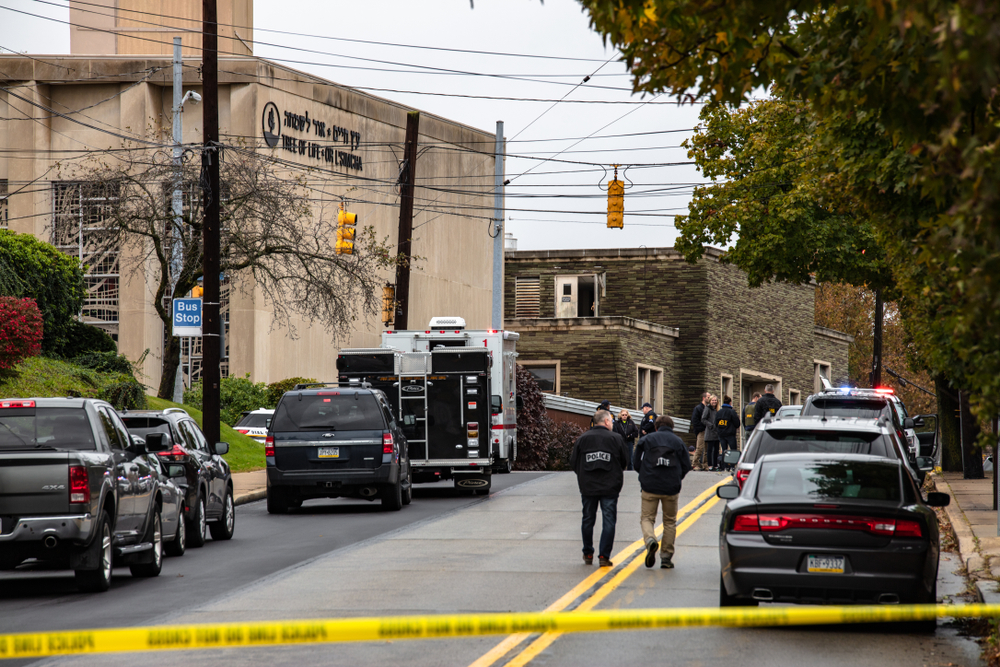Once again as a Nation we are confronted with the unthinkable, a horrific mass shooting that breaks our hearts and fuels our outrage. The attack at the Tree of Life Synagogue on 10/27 is especially poignant, as it occurred in a place of peace and worship, with many of the 11 victims being elderly congregants seeking comfort and community, along with a young family or young families celebrating new life (a bris was being conducted). While we have become at a certain level “numb” to these events due to frequency, we will never understand nor accept these as “commonplace” or expected…nor should we. Each new attack reminds us of our collective responsibility to strive for peace, safety, security, and respect for everyone …all of the time. While challenging to be sure, there truly is no other alternative.
As Business Leaders, you occupy a unique place – one that calls on you to maintain the strength and viability of your organization while simultaneously responding to the emotional distress present for some of your employees. Times of crisis inevitably turn all eyes toward leadership; and your messages of compassion & strength, hope & resilience, can play a crucial role in reinforcing the health and healing of your workforce. In past events, many leaders have found it helpful to structure their communications/interactions around a simple acronym – ACT:
- Acknowledge and name the event – ignoring it or assuming it has not touched your employees can be a reckless form of denial. By addressing the issue directly, you are clearly stating that you “get it,” that you care, and that the company is going to respond appropriately. These are all essential elements in recovery.
- Communicate Compassion and Competence – by recognizing the wide range of emotional reactions to these events and having a corresponding message of resilience (i.e. think “Boston Strong”), you create an atmosphere in which employees can express their concerns while also tapping into their coping skills – a natural process following crisis.
- Transition to a Future Focus – beyond emotional expression, it is also essential that leaders have a clear plan for the immediate future. That plan should include information about ongoing support resources offered through their EAP, any changes to work schedules/duties, and a commitment to review existing policies/protocols/practices around safety and security, particularly as it relates to hate crimes. Below is specific information related to hate crimes to assist you with your own analysis and internal communication.
The tragic events at the synagogue in Pittsburgh and other recent incidents, including the shooting near Louisville, Kentucky are believed to be the result of hate crimes. Because of the targeted nature behind these events, the reach can be deeply distressing and extensive.
A few important aspects of these crimes allow us to establish prevention measures, they include:
- Geography – most of the perpetrators act through mental “maps” from experience, habits, and knowledge; and therefore, reside or work near the communities they threaten.
- “Leakage” – many will begin to speak or act in a more threatening manner both in person and on social media. This behavior, if you know what to look for, has the potential to be identified early. If you encounter hateful rhetoric at or directed toward your workplace, it is important to share such with those in authority who can investigate further (law enforcement, management of the workplace/location, security personnel, etc.). As always, if you “see something, or hear something, say something.”
- Anticipatory actions – many begin to plan their actions by surveilling the site in a conspicuous manner.
For publicly accessible facilities, it can be important to leverage low tech options: such as proactively establishing liaison with law enforcement and using landscaping for security. Knowing what to look for is also critical for safety. This includes individuals sitting in parked cars or at bus stops, people dressed unusually, taking photos, or exhibiting nervous behaviors.
The recent events will likely result in a number of actions that begin to expand the supportive circles of impact. These include: community meetings, increased participation in upcoming community events, additional law enforcement patrols, and demonstrations of solidarity – including memorials, speeches, and marches.
Our hope is that this information may be useful as you strive to make your workplace – and your community – a safer, kinder and more peaceful place.

